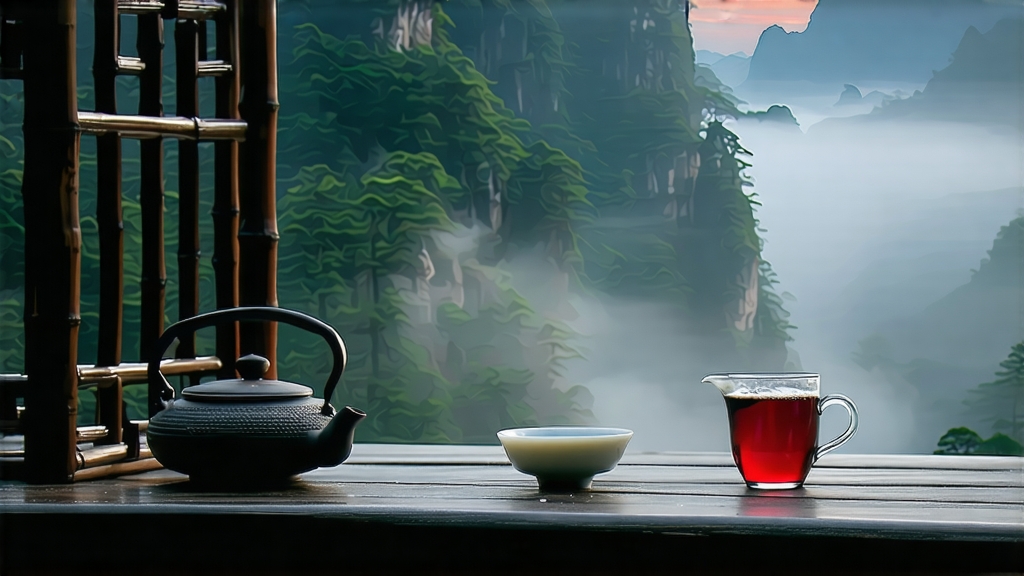
Long before the English added milk and sugar, before the Indian subcontinent knew tea bushes, a small village in the Wuyi Mountains of Fujian province was already turning fresh green leaves into something unprecedented—fully oxidised, copper-black, and fragrant with the resinous soul of burning pine. That village was Tongmu, and the tea, baptised by 17th-century Cantonese merchants as Lapsang Souchong, became the prototype for every black tea on earth. Today, when professionals speak of “the original red tea,” they are referring to this very leaf, still hand-fired in the same narrow gorge where the Zheng and Jiang families have lived for 800 years.
History: From Smuggled Bush to Boston Harbour
Legend fixes the birth year at 1646, when Qing soldiers forced tea workers to speed up drying; pine torches were the only heat source available. The accidental smoke pleased Dutch buyers so much that the process was repeated, refined, and guarded. By 1669 the East India Company listed “Bohea Souchong” at 28 shillings a pound—more than a craftsman’s weekly wage—making it the first Chinese tea legally landed in London. A century later its aroma drifted through Boston’s Griffin’s Wharf as colonists hurled chests of it into the sea, an act that began with the leaves grown on Wuyi’s rocky slopes.
Terroir: A Micro-climate Inside a UNESCO Buffer Zone
Tongmu lies inside a protected core of 60 square kilometres where outsiders need permits to enter. The gorge funnels humid air from the Jiuqu (Nine-Bend) River into perpetual mist; daytime temperatures hover around 18 °C, dropping to 12 °C at night. Such stress concentrates amino acids, while the sandy, mineral-rich tuff soil—remnant of volcanic Ordovician bedrock—forces roots to dive three metres for water, building the thick, waxy leaves that can endure smoke without collapsing into bitterness.
Two Botanic Faces
The traditional cultivar is Xiao Zhong (small-leaf) Qunti, an indigenous shrub with oval, serrated leaves no longer than 5 cm. Since 2005 a larger, aromatic cultivar called Caixia (colour-dawn) has been grafted in, yielding a sweeter, less tannic liquor favoured in new-style “unsmoked” versions. Purists insist only Qunti picked before Qingming (early April) deserves the name Zheng Shan (“core mountain”) Xiao Zhong.
Craft: Where Fire Becomes Flavour
Withering happens in two stages. First, baskets of leaves are placed above a ground-level pine ember pit for 30–40 minutes; the gentle warmth softens cell walls while absorbing volatile phenols. Next, the leaf is moved to bamboo trays set over a raised hearth of Masson pine and Chinese red pine; here it loses 60 % moisture in three hours, turning from jade to mulberry. Rolling follows the Wuyi “strip-twist” technique—light pressure, 8-minute cycles—preserving whole leaves rather than CTC pellets. Oxidation occurs in cedar-lined boxes kept at 24 °C and 85 % humidity; master sniffers judge readiness by the shift from apple to honey aroma. The critical smoking phase uses the same pine logs, now reduced to glowing coals, covered with fresh sawdust to create a cool, white smoke. Leaves rest on sieves 80 cm above the fire for six to eight hours, absorbing guaiacol and syringol that later translate into whisky-lapsang notes. A final charcoal bake at 70 °C for 90 minutes fixes the flavour and drops moisture to 3 %, low enough for decades of aging.
Grades & Styles
- Traditional Pine-Smoked Lapsang: black, glossy strips, aroma of pine resin and longan; liquor bright crimson, sweet-smoky finish.
- Unsmoked Zheng Shan Xiao Zhong: developed for modern Chinese palates, dried only with hot air; cup shows cocoa, dried apricot, and a hint of narcissus.
- Wuyi Gongfu Lapsang: smaller, tightly twisted leaves, smoked for only two hours, designed for gongfu service; flavour is lighter, suitable for multiple infusions.
- Aged Lapsang: stored in unglazed clay jars for 5–15 years; smoke reced